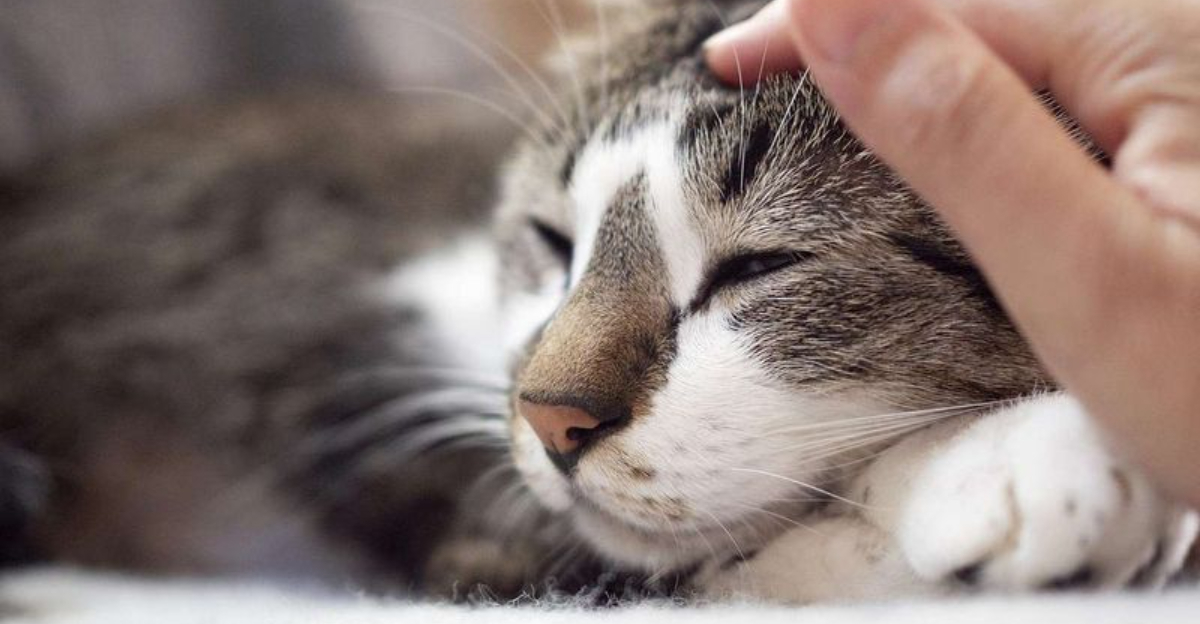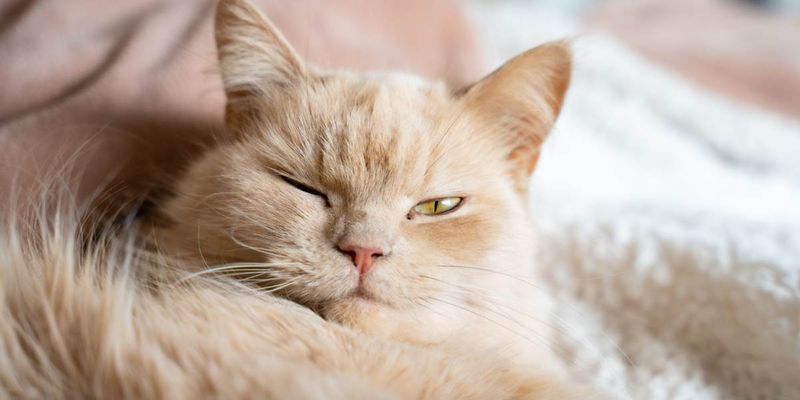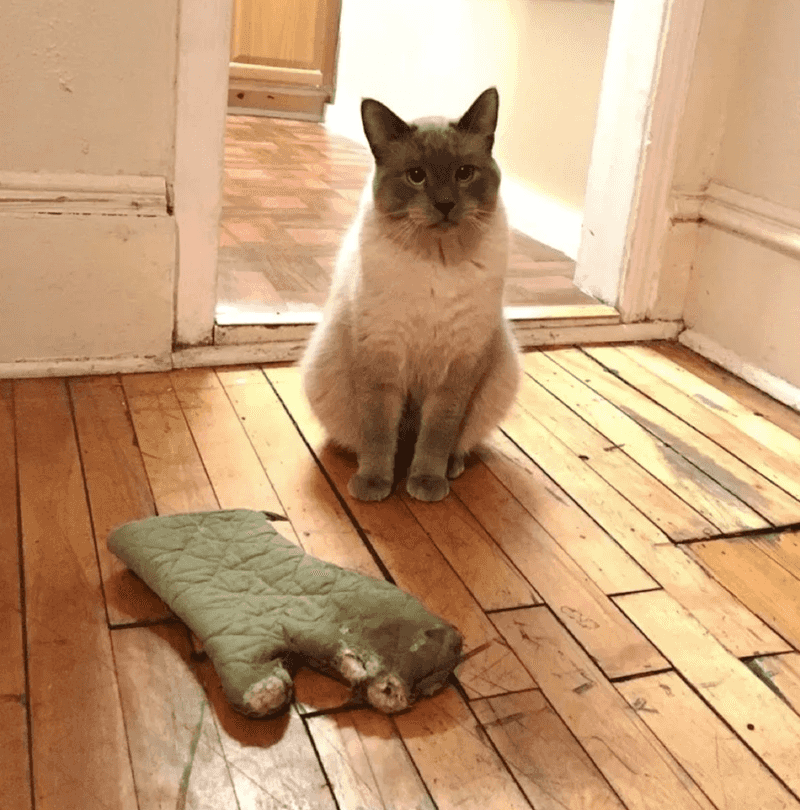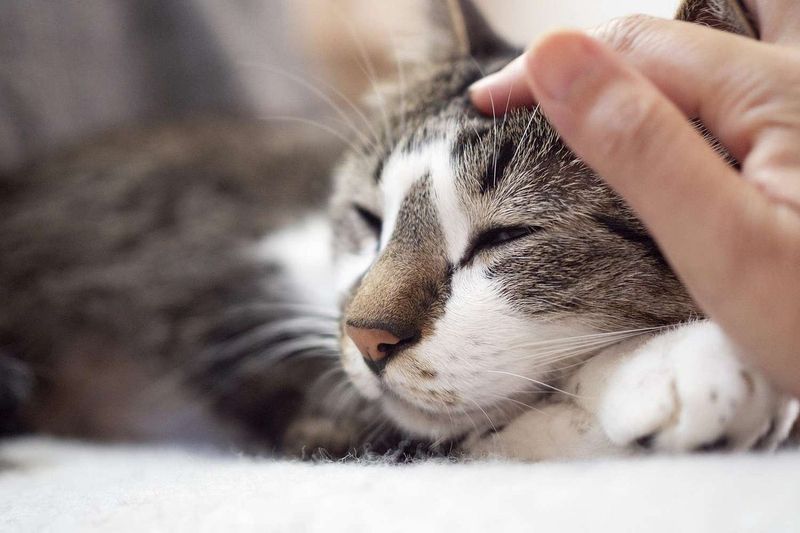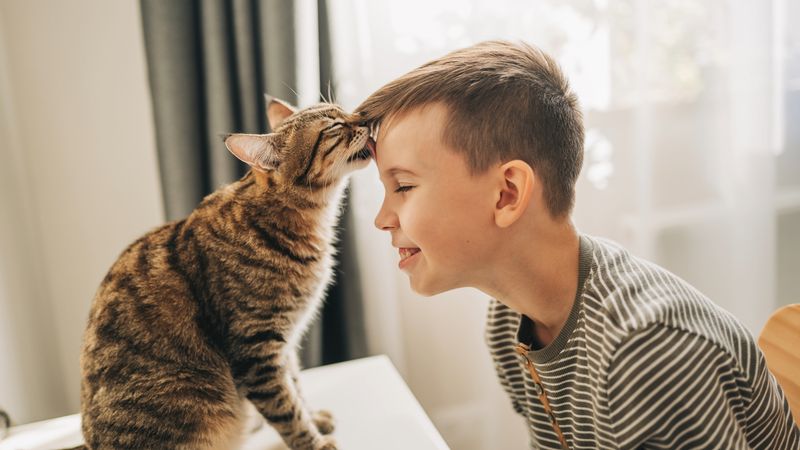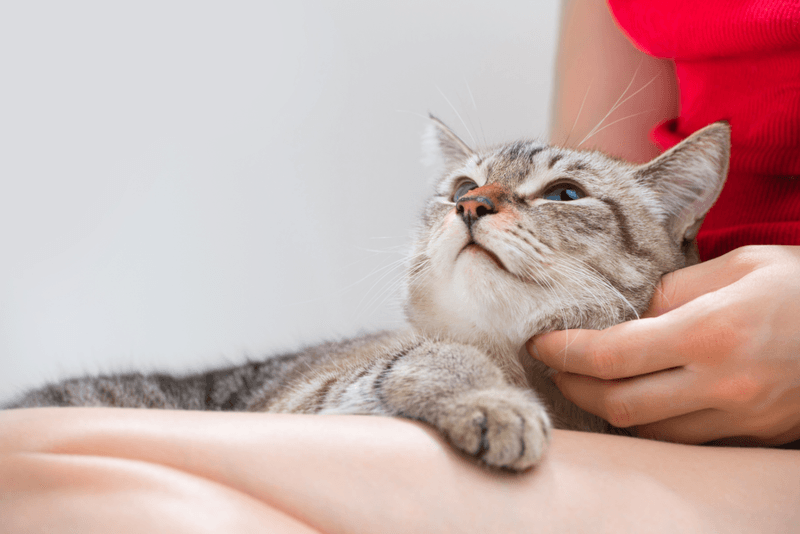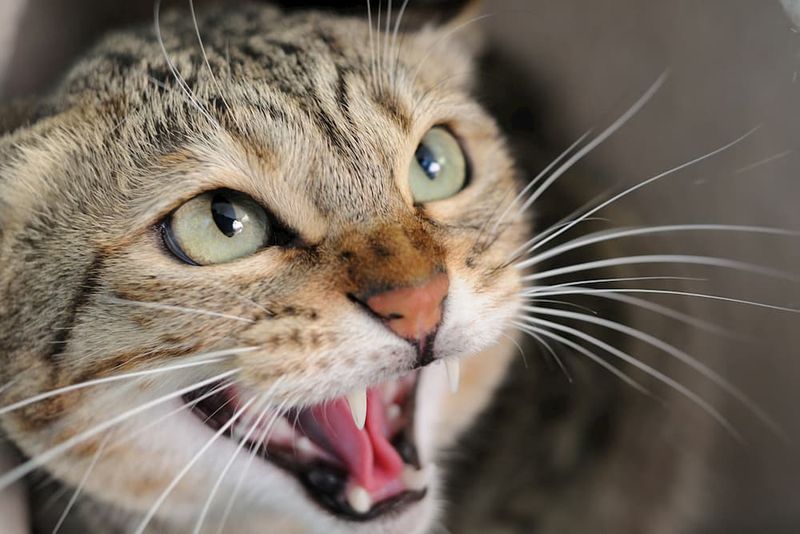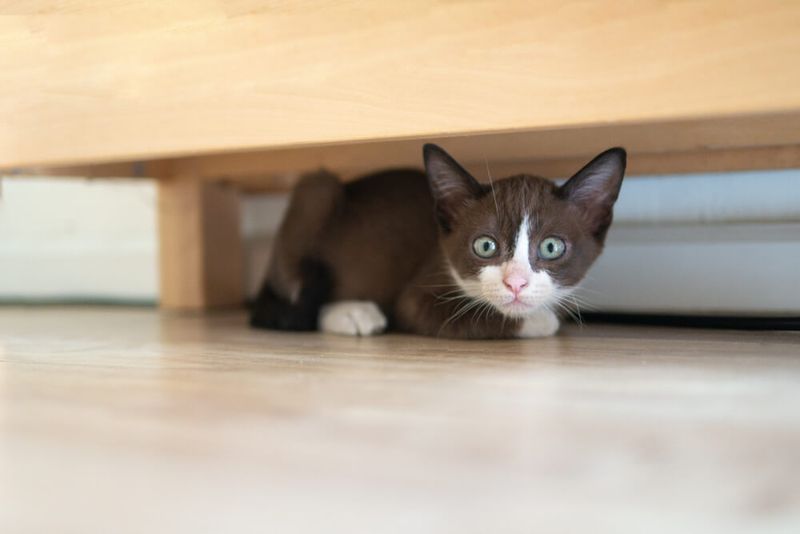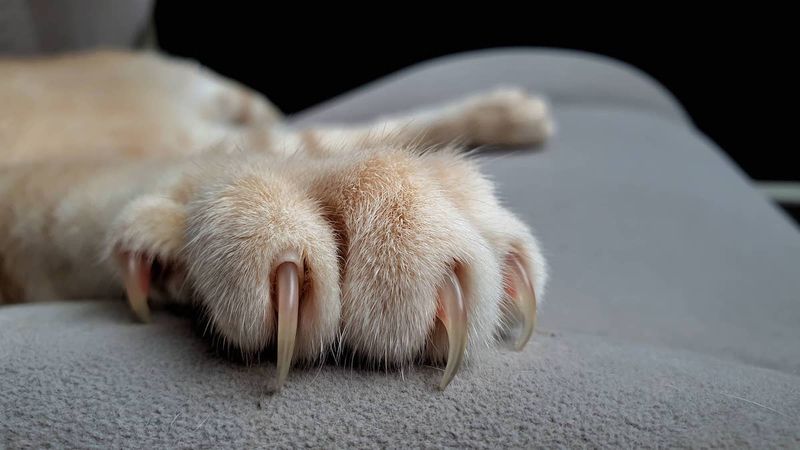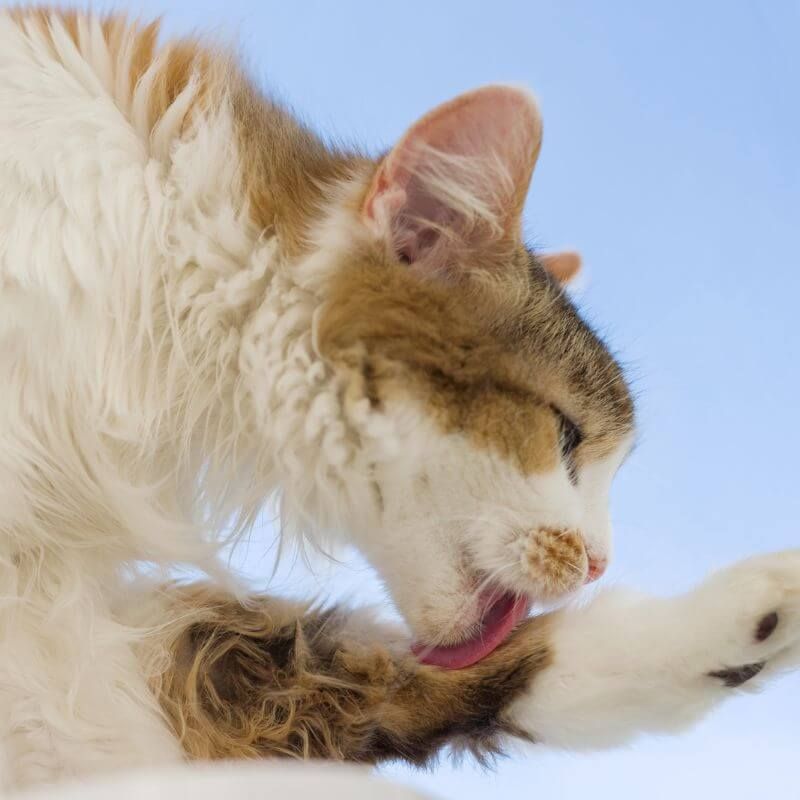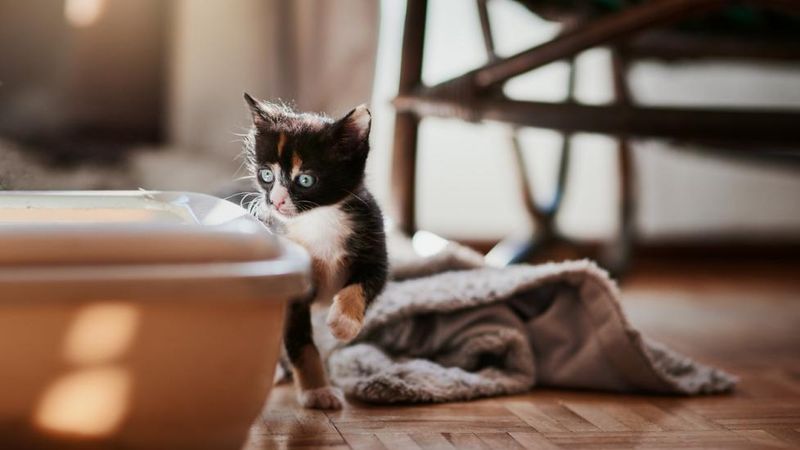📖 Table of Content:
- 1. Slow Blinks Mean ‘I Trust You’
- 2. Bringing You ‘Gifts’ Shows Affection
- 3. Purring While Snuggling Shows Contentment
- 4. Head-Butting Marks You As ‘Their Human’
- 5. Kneading Your Lap Shows Childhood Comfort
- 1. Aggression Without Provocation Signals Distress
- 2. Constant Hiding Reveals Insecurity
- 3. Destructive Behavior Indicates Frustration
- 4. Excessive Grooming Betrays Anxiety
- 5. Inappropriate Elimination Suggests Distress
Cats often appear to be enigmatic creatures, keeping their emotions hidden behind their aloof demeanor. However, they have their own ways of expressing how they feel, often more clearly than one might expect. Paying attention to their subtle cues can reveal a lot about their comfort and sense of security in the home.
A cat’s behavior, whether it’s the way they greet their human or their actions during peaceful moments, can offer valuable insight into their emotional state. When a cat feels safe, they tend to display behaviors that indicate trust and affection. Recognizing these signs is crucial to building a strong bond with a feline companion.
It’s not always about what a cat does, but also about what they don’t do. A cat that is comfortable in their environment will exhibit certain behaviors, while those feeling anxious or insecure may act in ways that signal distress. Being attuned to both the positive and negative signals can ensure a harmonious relationship with your cat.
1. Slow Blinks Mean ‘I Trust You’
Cat experts call this the ‘kitty kiss’ – when your cat looks at you and slowly closes their eyes, they’re showing deep trust and affection. This vulnerable gesture indicates they feel completely safe in your presence.
Try initiating this loving exchange yourself! Make eye contact with your cat and slowly blink. Many cats will return the gesture, creating a special moment of connection between you. Cats only slow-blink around humans they consider family.
This non-verbal communication is one of the purest expressions of feline love, as cats only display this behavior when they feel completely comfortable and content in their environment.
2. Bringing You ‘Gifts’ Shows Affection
Those mice or toys your cat proudly drops at your feet aren’t random offerings. They’re tangible signs your cat considers you family and wants to share their ‘hunting success’ with you. In cat society, this behavior is reserved for trusted colony members.
While finding a dead bird on your doorstep might not seem like love to you, in your cat’s mind, they’re providing for you and showing deep attachment. Indoor cats often substitute toys for prey, bringing their favorite playthings instead.
This behavior stems from a cat’s instinct to teach hunting skills to their kittens – meaning they see you as someone they care for.
3. Purring While Snuggling Shows Contentment
The rumbling engine sound from your cat’s chest during cuddle time represents pure happiness. Cats reserve their loudest purrs for moments when they feel utterly safe and loved in your presence. The vibration frequency of purring even promotes healing and reduces stress for both of you.
Notice how your cat positions themselves during these purring sessions. A cat who stretches out, exposing their vulnerable belly while purring, demonstrates complete trust in your bond. Many cats will specifically seek out their favorite human for these special moments.
Consistent purring during physical contact is one of the clearest indicators your cat feels deeply connected to you and cherishes your relationship.
4. Head-Butting Marks You As ‘Their Human’
That gentle bump against your leg or face is called ‘bunting’ – your cat is actually marking you with scent glands on their forehead. This behavior means they’ve claimed you as part of their trusted inner circle and want other animals to know it.
Head-butting is a privilege cats reserve only for their most trusted companions. When your cat rubs their head against you, they’re creating a shared scent profile that identifies you both as family. Many cats will perform this ritual daily with their favorite humans.
The stronger your bond grows, the more enthusiastic these head-bumps become – some cats will launch themselves across the room for a proper greeting!
5. Kneading Your Lap Shows Childhood Comfort
Those rhythmic paw pushes against your lap – sometimes called ‘making biscuits’ – connect directly to your cat’s earliest memories of security. Kittens knead their mother’s belly to stimulate milk flow, and adult cats only continue this behavior with humans they associate with similar comfort and safety.
A kneading cat is experiencing deep contentment in your presence. The more relaxed they appear while kneading – half-closed eyes, purring, maybe even drooling a bit – the more profound their sense of trust.
Some cats even suckle on blankets while kneading, revealing how deeply this comfort behavior runs. When your cat chooses your lap for this special ritual, they’re essentially saying, ‘You’re my safe place.’
1. Aggression Without Provocation Signals Distress
Sudden swatting, hissing, or biting when you haven’t done anything to trigger it often indicates your cat feels fundamentally unsafe. Cats don’t become aggressive without reason – this behavior typically stems from fear, anxiety, or past trauma that hasn’t been addressed.
Pay attention to the circumstances when this happens. Does your cat lash out during specific activities, like petting certain areas? Or is the aggression seemingly random? The pattern can reveal underlying issues affecting your bond. Unpredictable aggression particularly warrants a veterinary check to rule out pain or illness.
A loved cat feels secure enough to communicate boundaries without resorting to attacks, using subtler warnings first.
2. Constant Hiding Reveals Insecurity
A cat who spends most of their time hiding under furniture or in closets is telling you they don’t feel safe in their environment. While all cats occasionally seek alone time, healthy cats should spend significant portions of their day in shared family spaces, even if they’re not directly interacting.
Check whether your hiding cat emerges more when the house is quieter or certain people are absent. Environmental stressors like loud noises, unpredictable movements, or even the scent of another animal can create persistent anxiety. Some cats hide due to past negative experiences they associate with humans.
A secure, loved cat may have favorite hideaways but will regularly choose to be near their humans voluntarily.
3. Destructive Behavior Indicates Frustration
Excessive scratching of furniture, knocking items off shelves, or other destructive behaviors often signal a cat whose emotional or physical needs aren’t being met. Contrary to popular belief, cats rarely destroy things out of spite – these actions typically communicate frustration, boredom, or anxiety.
Cats need appropriate outlets for natural behaviors like scratching, climbing, hunting, and exploring. Without these, their frustration manifests as destruction. The timing of these behaviors provides clues – destruction that happens while you’re away may indicate separation anxiety or insufficient environmental enrichment.
A fulfilled, properly stimulated cat who feels secure in their relationship with you will direct their energy toward appropriate toys and scratching posts.
4. Excessive Grooming Betrays Anxiety
Cats naturally spend time grooming, but when this behavior becomes obsessive – creating bald spots or skin irritation – it signals significant emotional distress. Psychogenic alopecia (stress-induced overgrooming) develops when cats try to self-soothe but can’t resolve their underlying anxiety.
The areas most commonly overgroomed include the belly, inner legs, and base of the tail. You might notice your cat focusing intensely on these areas, sometimes to the exclusion of normal activities. This behavior often escalates during times of change or when the cat feels insecure in their relationship with their humans.
A cat who feels genuinely loved and secure maintains healthy grooming habits without developing compulsive behaviors.
5. Inappropriate Elimination Suggests Distress
A house-trained cat who suddenly starts urinating or defecating outside the litter box is sending a powerful distress signal. While medical issues like UTIs must be ruled out first, behavioral causes often relate to feeling unloved or insecure in their environment.
Cats may choose personal items like your bed or clothing when eliminating inappropriately because these carry your scent. Rather than being spiteful, they’re actually mixing their scent with yours – a confused attempt to create security.
Environmental stressors like new pets, schedule changes, or even moving furniture can trigger this behavior. A cat who consistently uses their litter box demonstrates they feel their territory is secure and respected.
